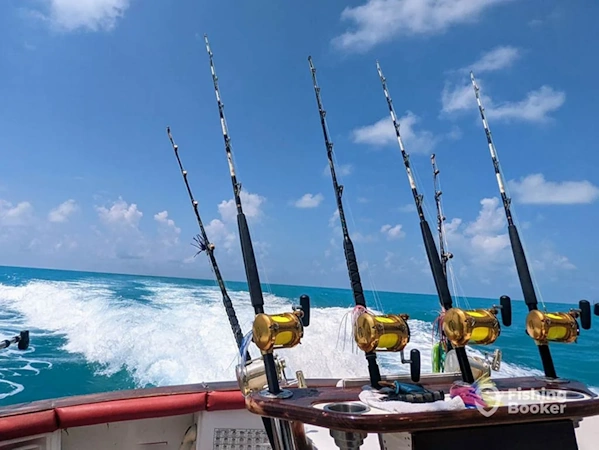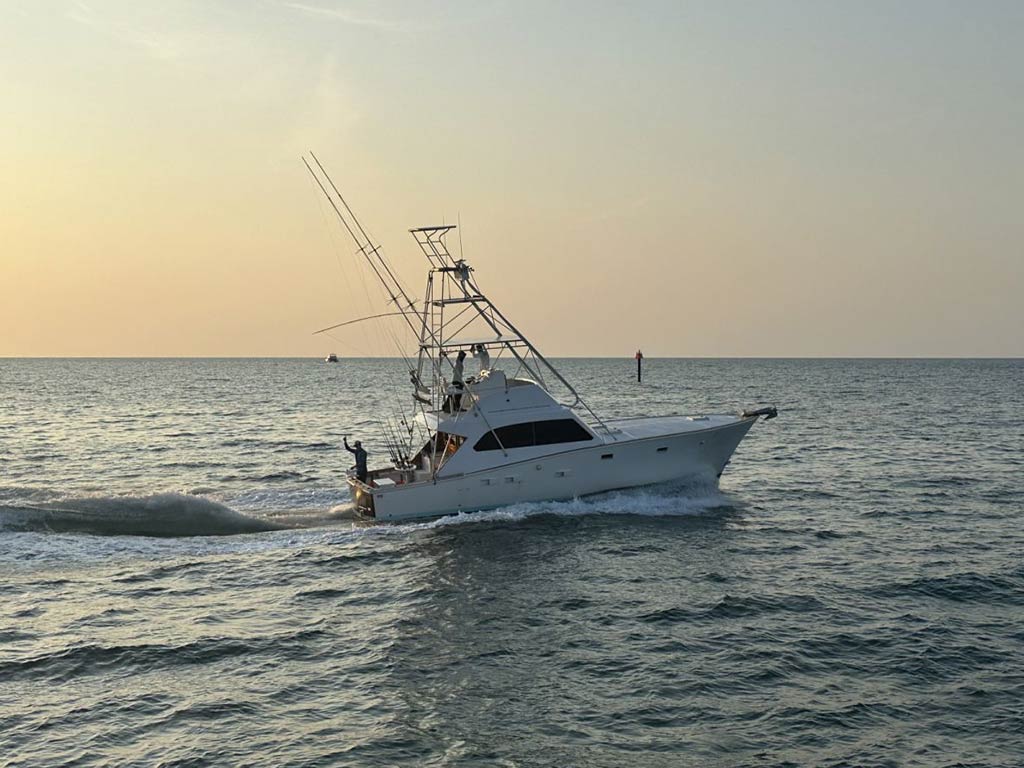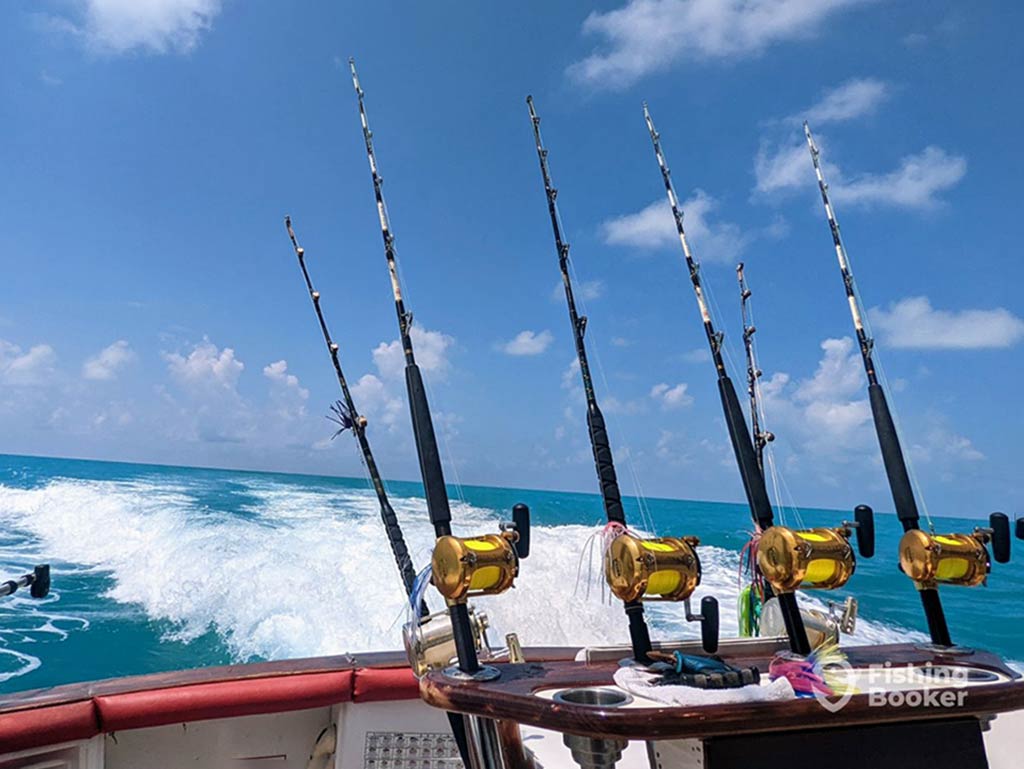
Reading Time: 7 minutes
If you’re like me and tend to stick to the inshore waters of Florida, you’ve probably been told plenty of times, “You’re missing out, offshore fishing is awesome!” I know I sure have been told that. But what exactly are we missing out on?

After doing a bit of research, listening to stories of offshore fishermen, watching videos, and seeing all the cool species anglers catch… It seems like there’s quite a bit! But there’s one experience out there that really puts the icing on the cake – Tuna fishing in Florida. Let’s dive in and see what it’s all about!
Florida Tuna Fishing Regulations
First things first. It’s important to make sure you are aware of the regulations when it comes to Tuna fishing in Florida. Like any other species, rules are put into place to ensure healthy fisheries and to protect the population. It’s no secret that Tuna are heavily hunted and harvested. I mean there are TV shows out there specifically on Tuna fishing!

Something important to note is that some Tuna are considered Highly Migratory Species (HMS). Examples include Bluefin, Bigeye, Albacore, and Yellowfin Tuna. If fishing for these guys in federal or state waters, you’ll need a federal HMS angling permit. In federal waters, the permit issued per vessel will cover everyone fishing on board, but in state waters, they apply to anglers individually.
If you catch a Bluefin Tuna, whether in state or federal waters, you have to report it to the NOAA by the next day. If you keep other HMS Tunas, you’ll also have to report it to NOAA within 24 hours. These can be reported over the phone or online.
If you participate in a tournament where you’ll be Tuna fishing in Florida and you come across highly migratory Tuna species, be sure to follow regulations. Usually, the tournament directors will have already taken the regulations into consideration and will communicate with anglers to let them know of any specifications.
For Blackfin Tuna, Atlantic Bonito, and Little Tunny, you won’t need any special permits. The season is open year-round for these guys and there aren’t any minimum size limits. The only thing to keep in mind is the daily bag limit of two fish or 100 pounds, whichever is greater.

However, the good news is that if you’re fishing with a licensed charter in Florida, most of these permits will be taken care of. You can sit back and focus on catching big, delicious fish to take home!
When is the best time to go tuna fishing in Florida?
Tuna prefer warmer waters, so Florida is a perfect location for them because the water is mostly warm year-round. In addition, some regions in Florida such as the Atlantic Ocean, reach good depths quickly, so traveling schools of Tuna can comfortably swim by.

Because they like the warmer conditions, the summer months tend to provide the best opportunities for finding Tuna. Although, depending on the species you can usually find them in Florida year-round.
For example, Blackfin Tuna are in Florida’s waters all year long, while species such as Yellowfin, Atlantic Bonito, Bigeye, Little Tunny, and Bluefin reach their peaks during the summer. Some of these species will migrate away for some time before being found again, while others may still be present but in smaller numbers.
Mostly all Tuna species will be active throughout the day, with peak biting times at dawn and dusk. Some species, such as Bigeye and Yellowfin tuna, often bite during the dark hours of the night as well.
When it comes to the tide, each species has its own taste. While you will be mostly offshore when fighting these guys, the movement of water can be influential, even if you are far out there. Bigeye, Little Tunny, and Blackfin Tuna like slack tides. On the other hand, Yellowfin Tuna and Atlantic Bonito are most active during strong outgoing or incoming tides.
Florida Tuna Fishing Gear
You can use pretty much any gear for Tuna fishing in Florida, depending on what Tuna you’re targeting. If you’re looking for small guys – Little Tunny, for example – you can use any common spinning or fly fishing setup – just like you would use inshore for Snook, Redfish, etc. A spinning setup consisting of a medium rod paired with a 3000 or 4000 reel will work fine.

On the other hand, if you’re going for a large Bluefin Tuna, you’ll want to use an extra heavy rod and a 30000-sized reel for a spinning setup. Conventional reels are also common and you can use sizes up to 130 to bring in these beasts. In addition, there are specific jigging and trolling rods and reels out there that suit Tuna fishing.
Braids and fluorocarbon leaders starting at 80 pounds are a good idea. Some Tuna, like Bluefin, can also be skeptical when it comes to seeing a leader. Try to go as low as you can, while still having a strong enough leader to fight these guys. Most anglers recommend using an 8/0 hook. The larger the fish, the higher you should go.
Best Bait for Tuna Fishing in Florida
Some great examples of live bait for Tuna include ballyhoo, threadfin herring, blue runners, pogies, mullet, squid, and flying fish. Using these baits dead or cut up has also been proven to be successful.

If you’re not planning on using real critters for bait, artificials work just fine too. Examples of artificial lures include jigs, feathers, spoons, and strip baits. Anything that seems to shimmer or move, or has a bait-like appearance, such as similar coloring or eyes, will easily catch the attention of a Tuna.
Whether live, dead, or artificial, the best method for Tuna fishing in Florida is to troll your bait behind the boat at a slow and steady speed.
Where to Go Tuna Fishing in Florida
Depending on the area of Florida you’re in, your most productive fishing areas will vary. Let’s take a look at a couple of different locations that boast popular Tuna fishing in Florida and find the best times to visit them.

Let’s start down south with the Florida Keys. Here, you can easily reach deeper waters, and they’re also warm year-round. You can pretty much go Tuna fishing in the Keys all year long. Blackfin and Yellowfin commonly fill the deep waters, and plenty of anglers come from all around looking for the chance to hook one. Going out of Key West is your best bet in the Keys.
Another popular destination to go Tuna fishing in Florida is Destin. Located in the Florida Panhandle, trips here reach the deeper waters of the Gulf of Mexico. Some of the offshore Tuna hotspots include the oil rigs out there that provide shelter for many creatures, with schools of Tuna lurking by. If you travel over 100 miles offshore, you’ll be able to locate them. And the farther you go, the more you’ll find!

Adding to popular spots to go Tuna fishing in Florida is West Palm Beach. On the Atlantic side, the waters here get a lot deeper, especially the further you go. Blackfin Tuna are hear year-round, with chances of running into some big Bluefin Tuna, too. These guys can reach up to 1,500 pounds! The Atlantic is a mighty ocean, so you never know what might be traveling by!
Whether you’re fishing in the Gulf of Mexico, the Keys, the Panhandle, or the Atlantic coast, you have plenty of opportunities to go Tuna fishing in Florida. As long as you reach deeper waters, find active areas of fish, and have the right bait, you have a good chance at hooking into some.
How to Go Tuna Fishing in Florida
As mentioned, the offshore waters hold structures where plenty of species take shelter and search for food. It’s best to have an offshore boat that can handle big waves and trips that go miles and miles out. If you don’t have a boat suitable for this – or you don’t have a boat at all – no worries. You can easily find a fishing charter to suit your needs.
There are plenty of options that specialize in Tuna fishing. Just bear in mind that, a lot of the time, the “honey holes” are quite far offshore. That means you’ll need a long time to reach them. Be prepared for at least a full day on the water.
No matter where you go or who you pick, you’re sure to have a blast while Tuna fishing in Florida! Your experienced captain is sure to know exactly how to entice the fish – probably by trolling – so you can head home with a cooler full of fish!
Tuna Fishing in Florida: A Battle for the Ages

Spending a day in the offshore waters chasing these strong species is a real treat. Who knows, it may be the beginning of a new hobby for you. The strength of these fish will wear you out – but your aim is to do the same to them! Come aboard and catch that bucket-list monster!
The post Tuna Fishing in Florida: An Angler’s Guide appeared first on FishingBooker Blog.
This article originally appeared here and was republished with permission.












